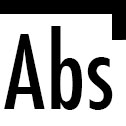
It's hard to imagine we didn't meet in Nicaragua or perhaps Cuba. Or on the streets of New York City in the 80s. When Jenny Romaine was walking on stilts and I was poet-ing or with clipboard, no cell phones then.
He must have been bending and flying. With Ginger. At Judson Church. Or a plaza in Amsterdam. The movement of movement.
Sometime in 2006 I got an email from him, seemingly out of the blue. I had decided I needed to think deeper, better, pay attention to my craft, and stop chasing crises. I wanted to share what I had experienced that might be useful for young people, support their growth. I wanted to learn in a different way, so I put the word out.
Our mutual friend/colleague Allen Hunter suggested to RM that I might have something to offer a department called Art and Public Policy.
Randy asked if I wanted to teach a course in how organizations and artists work together. Or don't, I suggested.
Many people will write about Randy's scholarly brilliance, how few understood really what he was saying, his multifaceted, constantly surprising accomplishments.
True, true, and more true.
I want to add that he was a razor sharp institutional navigator—subtle, agile, and focused as the most skilled high seas commander, without the bravado.
Randy had a way of seeing how people and systems could work together, enhance, be enhanced, without lighting a torch or putting up a flag. With uncanny finesse and vision, he found space for people to fit into a structure which otherwise might not welcome (some of us).
Most stunning, perhaps, was his attention to students. He did what great teachers do, saw what someone could find in him or herself and guided that student towards making a new map. He offered a new landscape, new lexicon, and territorial openings of thought for his students.
With love and piercing faith in them, each of them.
I marveled at how he knew the name of each student and something about each of them before the semester started. Whatever effort went into that knowing never showed to me. His equanimity was uplifting.
His questions to me always threw me off balance. But he didn't ask them, I don't think, to humiliate me. It seemed as if he didn't have the choice but to stretch thought the way he had stretched his body as a dancer, or perhaps on the tennis court, making unusual twists and turns.
I never heard Randy complain. I never saw one dot of self-pity in all the months of treatment for his cancer. In the last month or two, he mentioned, sitting at his desk at 665 Broadway, that he used to know what his hands were doing and now he wasn't sure.
I never heard him speak disparagingly about anyone.
I've rarely seen a person exhibit such joy in work. Such playfulness in the serious.
It took a few years before I would say "Hey, Randy" when he walked by my office, which was next to his, because I felt his quiet, thoughtful outlining of respect for one's need for sovereignty.
I'm glad I pushed during his last summer for us all to get together for dinner—Randy, Ginger, my husband Jon, and me, at their place in East Hampton. (It had already been decided that I would become Associate Chair in the fall and then Chair the following year, of our department. We didn't realize the timeline would change so rapidly.)
I joked about the way I kept nudging him to agree to get together with Ginger and Jon outside of work. His response was "Sometimes persistence is necessary." Ginger and Jon moved through the pond collecting clams with rakes, talking as though they'd known each other forever. It was a particularly beautiful blue-to-pink sky evening. We cooked together and ate outside. Jon and I have referred to the gift of that night many times since.
The tenderness of that last summer also offered me another treasure—the enormous gift of a new friendship with Ginger.
Towards the end of summer, Ginger, Randy, and I met at the beach. Randy wasn't strong enough by then to swim in the waves. He stood at the shore, cheering it seemed, as Ginger and I plunged in.
It's easy for me to feel overwhelmed, tired, unappreciated. When that happens, I conjure the picture of Randy skipping down the hall, actually I think kicking his heels together in the air a bit, after delivering a spectacular synthesis of "where we are now" in terms of money, education, power, and art, to a leaning forward group of community cultural leaders in the most unlikely place—a high-windowed room in a building operating something called "higher" education.
He brought us higher.



